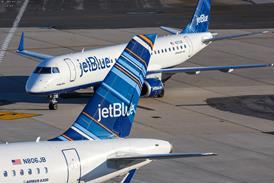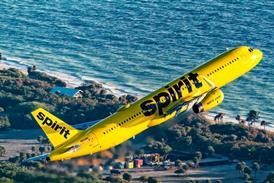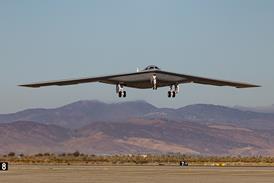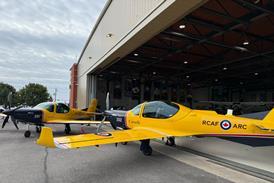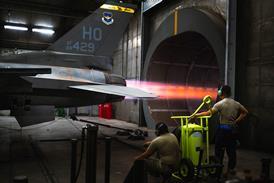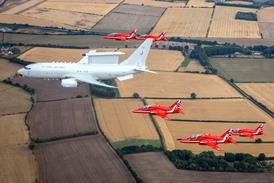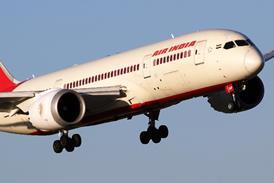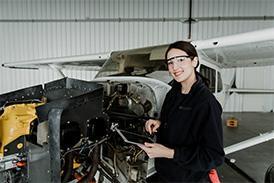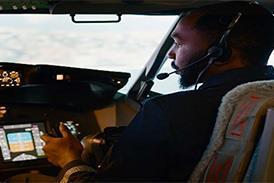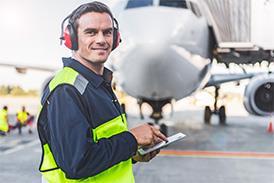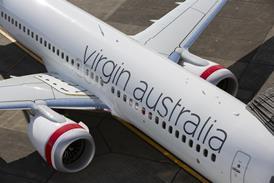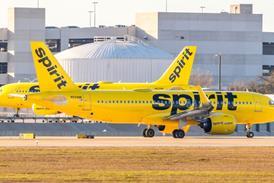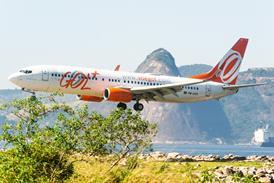Embraer hopes Avelo Airlines’ 50-strong E195-E2 order will prompt other US airlines to take a closer look at the jet, while Avelo describes the incoming E-Jets as perfectly suited for expanding in niche markets that larger airlines avoid.
Discount carrier Avelo, which now operates an all-Boeing 737NG fleet, on 10 September said it ordered 50 E195-E2s, becoming the first US airline to commit to acquire Embraer’s E2 family of Pratt & Whitney PW1000G-powered jets.
Avelo chief executive Andrew Levy says the airline plans to receive its first E195-E2 in early 2027 and for deliveries to continue into 2032.
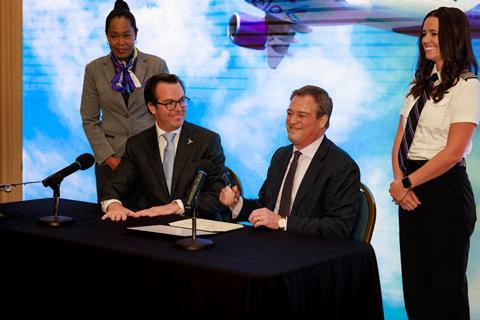
“We plan to use this airplane [for] the vast majority of our growth,” Levy says of the 3,000nm (5,556km)-range E195-E2. The airline intends to equip the jets with about 140 seats.
As of now, the USA imposes 10% tariffs on imported Brazilian products, aircraft included.
But the tax does not apply to US-made components, which account for about 40% of E-Jet content, says Embraer chief of commercial aircraft Arjan Meijer.
Also, Levy suspects the USA and Brazil will eventually reach an agreement exempting aircraft and aircraft components from the duties, saying, “I believe that aviation assets should be tariffed at zero… and I believe that’s eventually where we will get to”.
Industry publication The Air Current reports that as part of the order Embraer invested in Avelo through a debt-financing arrangement, though Avelo and Embraer decline to comment. Earlier this week, however, Avelo said it had landed another round of financing and had secured an unnamed “new partner”.
Embraer’s first-generation E-Jets have enjoyed enormous success in the USA, where regional carriers – most flying on behalf of major airline partners – operate some 760 E175s, according to fleet data provider Cirium.
But Embraer’s second-generation E2 family had not until now gained traction in the incredibly important US market. Major US airlines have eschewed E190-E2s and E195-E2s in favour of Airbus and Boeing narrowbodies, while many regional airlines cannot operate E175-E2s due to aircraft-weight limitations written into US airlines’ pilot contracts. Embraer has therefore not brought the E175-E2 to market.
“We see… a big role for the E195-E2 here in the USA,” Embraer Commercial Aviation chief executive Arjan Meijer said on 10 September during an event in Washington, DC. “We believe this is really a strategic shift to a lot of profitability for [Avelo] in a highly competitive low-cost arena.”
Meijer notes several US low-cost carriers have been struggling financially – indeed, in late August, for the second time in one year, Spirit Airlines filed for bankruptcy protection in US federal court.
“We believe Avelo, taking this bold step… with the E195-E2, is doing something different,” Meijer adds. “We believe the E195-E2 will allow Avelo to fly higher frequencies to smaller airports [in] a very profitable way.”
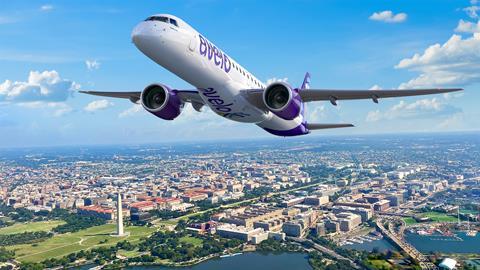
Avelo’s incoming E195-E2s will come equipped with Embraer’s E2 Enhanced Take-off System. Composed of three flight-control computers and four air-data sensors, the technology is designed to reduce required take-off distance by optimising rotation and providing steeper pitch, Embraer has said.
“It will allow customers on very… short runways to either take more payload or to get more range,” Meijer says. For example, E195-E2s with the system will be able to fly up to 400nm farther when operating from Key West’s 5,076ft (1,547m) runway, he adds.
Avelo now operates 22 737NGs, including 14 737-800s with 189 seats each and eight 737-700s with 147 seats, Cirium shows.
“Over time” Avelo intends to divest the 737-700s, replacing them with the E-Jets, Levy says. He expects 737-800s will remain core to Avelo’s fleet for the foreseeable future, saying the airline will likely acquire more 737-800s even before it begins receiving E195-E2s.
Levy considers the 737-800 a “phenomenal airplane”, and the twin CFM International CFM56 turbofans that power the type to be “the best engines ever made”.
By contrast, he says, the Max 8 and its CFM Leap engines do not measure up in terms of durability or performance.
Levy insists that Avelo is prepared to take on the complexity and cost associated with operating two aircraft types, saying his team “is very confident that we can run these two fleets at an extremely efficient cost basis”.
Avelo only got off the ground in 2021 and remains a niche airline. But it has been expanding and has established itself in numerous under-served markets, most in the eastern USA.
Levy founded Avelo after a career that included time as chief financial officer of United Airlines and later as president of Allegiant Air, a carrier with a similar business model as Avelo’s.
Levy says Avelo has turned operating profits in four of the last five months.
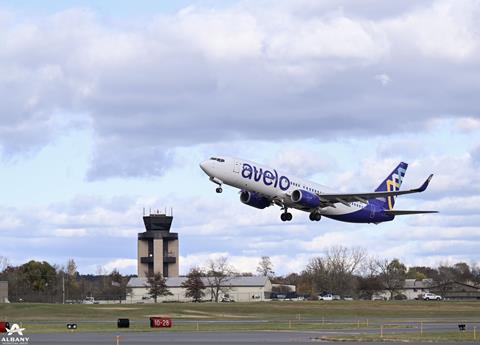
In November last year, Levy discussed Avelo’s fleet plan with FlightGlobal, at the time saying he was considering several aircraft types as contenders for expansion, including E-Jets, 737 Max and A220s.
Levy described A220s, with 3,400-3,600nm of range, as optimised for routes longer than the roughly 2h flights Avelo typically operates.
He called Boeing’s 737 Max 7 a solid contender but noted it can carry many more passengers – up to 172 – than Avelo might need. Boeing has also not yet certificated the Max 7.
”Personally, I don’t find the Max to be the right airplane for our business,” he says. “Maybe one day down the road, it might make sense, although I probably prefer just to add more NGs.”
Regarding the Max 7 specifically, Levy says that going that route would not allow Avelo to move quickly enough with its fleet plans.
”It’s not literally a paper airplane, but it’s not here yet,” he says.
Levy called the E195-E2 “a heck of a good airplane”, citing fuel efficiency and “amazing short-field performance”. But he noted E-Jets carry fewer passengers than 737s, resulting in an elevated cost per available seat mile (CASM).
“That’s still true… It’s got a higher CASM,” Levy said on 10 September. “But what we believe is more important is trip cost.”
That is because Avelo mostly operates routes from small cities that otherwise lack direct flights. Many of those airports have relatively short runways.
For instance, Avelo established a bustling base at Connecticut’s Tweed New Haven airport, which had essentially no commercial air service before Avelo arrived in 2021. Avelo now flies from Tweed to near 30 destinations, serving many of them seasonally and only a few times weekly.
On such routes, especially in the beginning, filling a 737 can be difficult, even unfeasible, says Levy.
He calls E195-E2s right-sized for such flights and says the type will let Avelo fly to short-runway airports where other airlines cannot operate.
“Lowest cost does not always win,” Levy says.
FlightGlobal reporter Howard Hardee contributed to this report.


